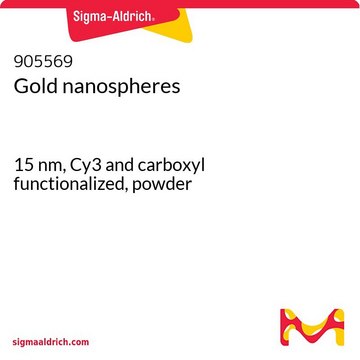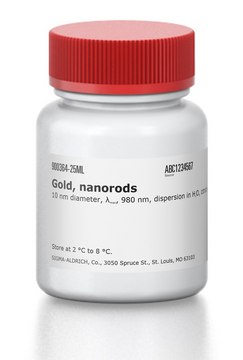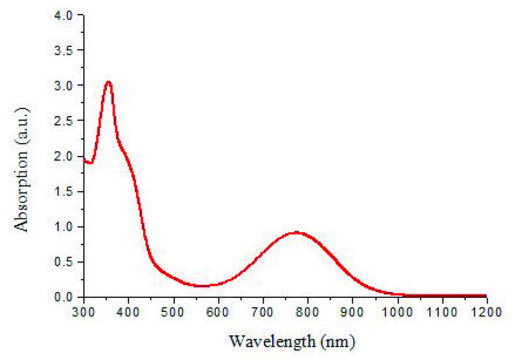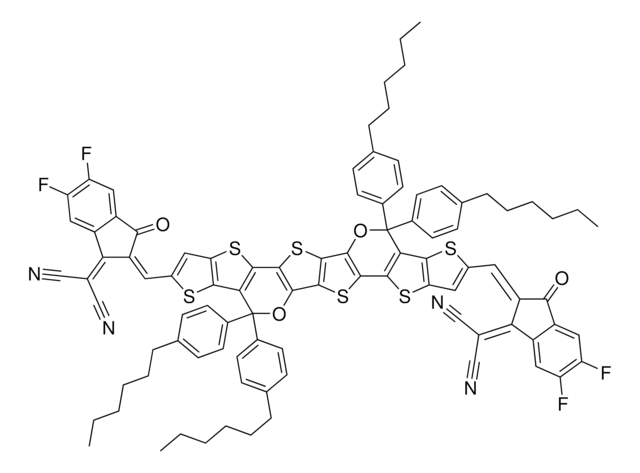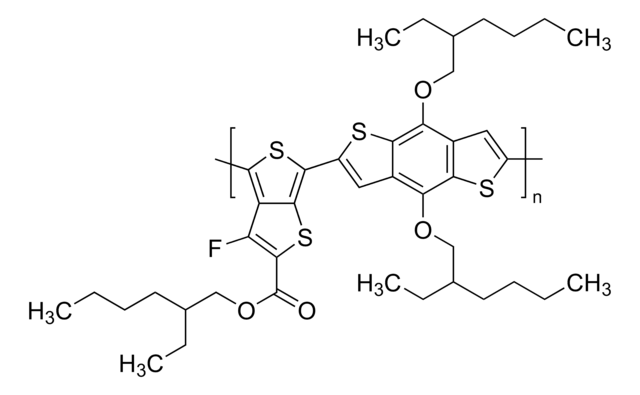906824
BT-CIC
≥98%
别名:
4,4,10,10-tetrakis(4-hexylphenyl)-5,11-(2-ethylhexyloxy)-4,10-dihydrodithienyl[1,2-b:4,5b′ ]benzodithiophene-2,8-diyl)bis(2-(3-oxo-2,3-dihydroinden-5,6-dichloro-1-ylidene)malononitrile), NFA147, PCE147
About This Item
推荐产品
描述
Band gap: 1.4 eV
Solubility:CB and ODCB
方案
≥98%
表单
solid
溶解性
chloroform: soluble
轨道能量
HOMO -5.5 eV
LUMO -4.1 eV
SMILES字符串
[s]1c2c(c%10c1c%11[s]c(cc%11C%10(c%15ccc(cc%15)CCCCCC)c%14ccc(cc%14)CCCCCC)\C=C%12/C(=O)c%13c(cc(c(c%13)Cl)Cl)C/%12=C(C#N)C#N)c(c3[s]c4c(c3c2OCC(CCCC)CC)C(c7c4[s]c(c7)\C=C8\C(=O)c9c(cc(c(c9)Cl)Cl)C\8=C(C#N)C#N)(c6ccc(cc6)CCCCCC)c5ccc(cc5)CCCCCC)OCC(CCCC)C
InChI
1S/C110H110Cl4N4O4S4/c1-9-17-23-27-33-69-37-45-75(46-38-69)109(76-47-39-70(40-48-76)34-28-24-18-10-2)87-55-79(53-85-93(73(61-115)62-116)81-57-89(111)91(113)59-83(81)99(85)119)123-103(87)107-97(109)95-101(121-65-67(15-7)31-21-13-5)106-96(102(105(95)125-107
InChI key
QKGHNUQLBFDZDZ-ROMINNPJSA-N
应用
A recently reported tandem cell, employing BT-CIC as the non-fullerene acceptor and PCE-10 as donor for the back cell showed an PCE of 15%.
Device performance:
Tandem [Front] (170 nm DTDCPB:C70 + ARC) [Back]PCE-10:BTCIC (1:1.5, 75 nm)
Jsc=13.3 ± 0.3 mA/cm2
Voc=1.59 ± 0.01 V
FF=0.71± 0.01
PCE=15.0% ± 0.3%
ARC:an antireflection coating
储存分类代码
11 - Combustible Solids
WGK
WGK 3
闪点(°F)
Not applicable
闪点(°C)
Not applicable
法规信息
商品
Professor Chen (Nankai University, China) and his team explain the strategies behind their recent record-breaking organic solar cells, reaching a power conversion efficiency of 17.3%.
我们的科学家团队拥有各种研究领域经验,包括生命科学、材料科学、化学合成、色谱、分析及许多其他领域.
联系技术服务部门

